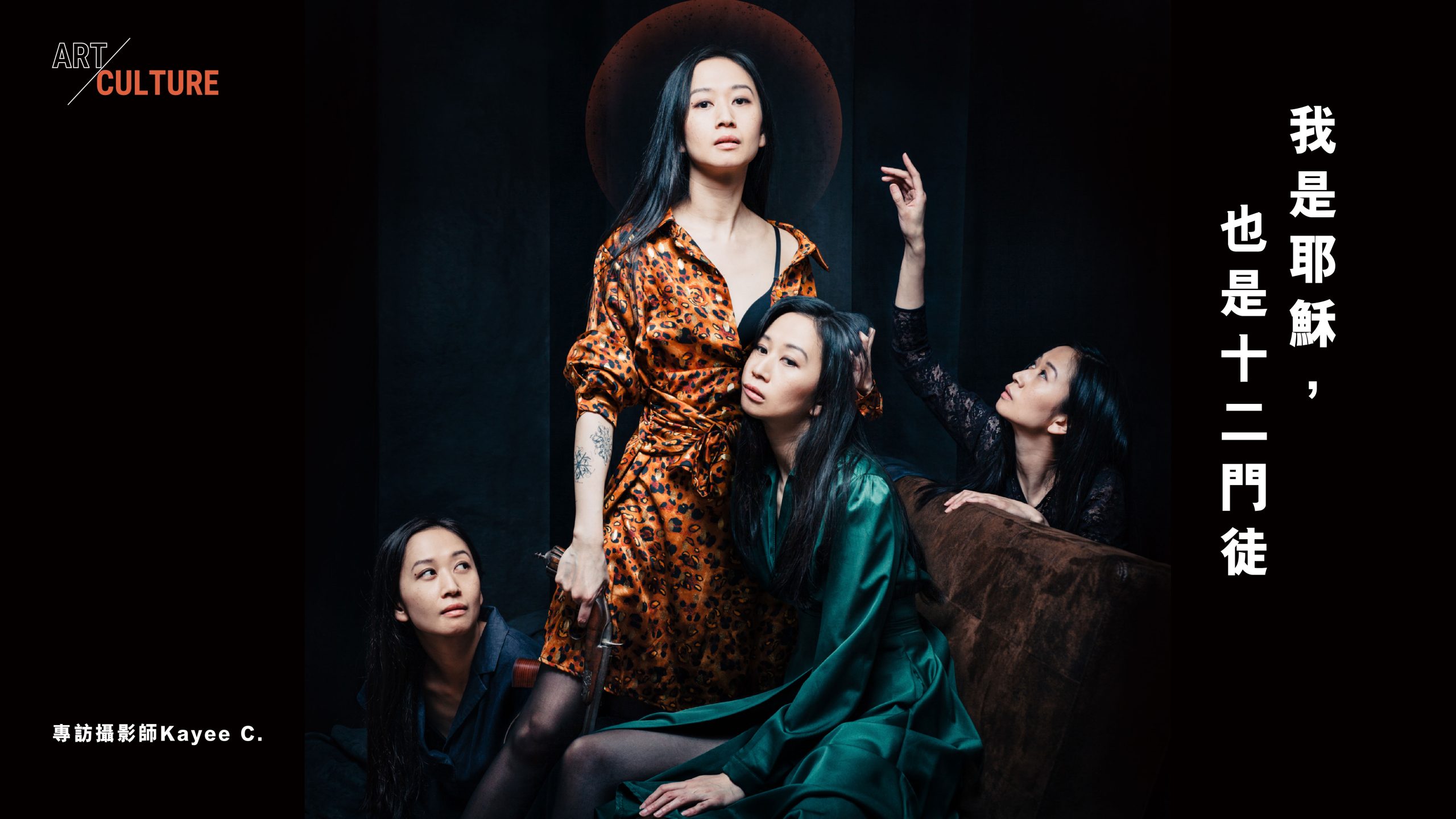
Between June and October of this year, the NordArt 2023, currently Europe’s largest annual contemporary art exhibition, took place in Büdelsdorf, Germany. One name that stood out amidst this creative extravaganza was that of Kayee C., a Hong Kong photographer.
Kayee is a portrait photographer renowned for a distinctive approach – she often casts herself as the central figure in her work. While the expectation might be profound revelations like “my art is a reflection of self” or “I meld personal emotions with characters”, her journey started with a simple yet practical reason. She began her photographic voyage in 2015, falling deeply in love with portrait photography. Yet inspiration doesn’t always align with model availability. Learning the ropes through self-study, she avoided wasting others’ time and schedules. Her self-portraits yielded unexpectedly stunning results, allowing her unfiltered expression, avoiding the third-party interpretation. After three years of this exploratory path, she unearthed her unique creative process by combining multiple self-portraits into single compositions.
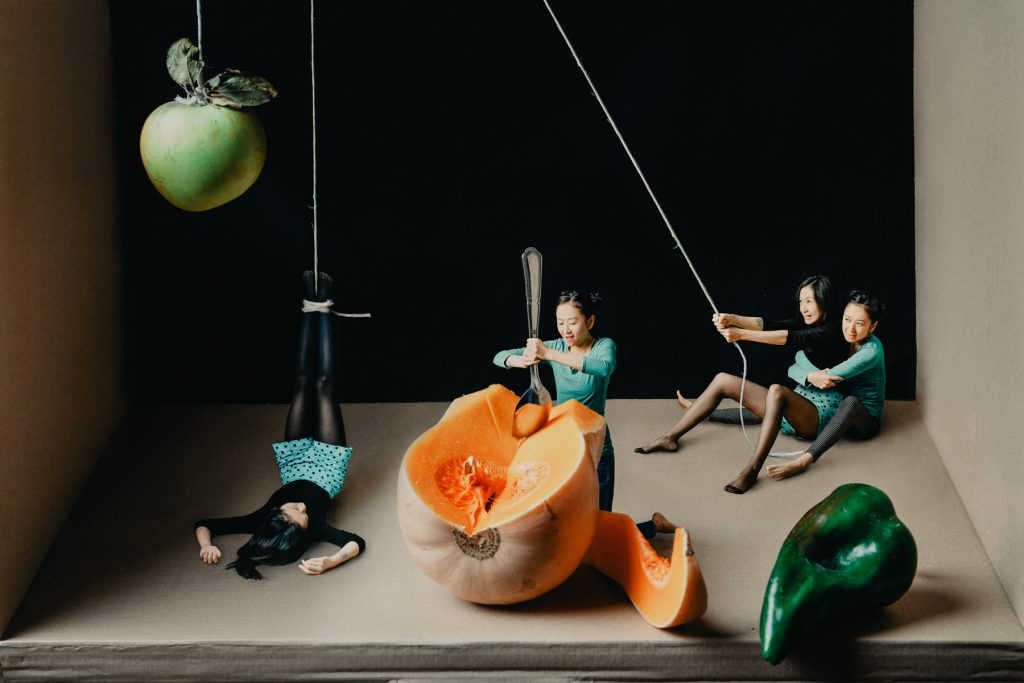
Many of Kayee’s pieces draw inspiration from Western masterpieces, a nod to her education in Hong Kong, where Western influence heavily shapes mainstream art instruction. Here, courses revolve around Western artists, frequently featuring European faces, thanks to their strong Christian or Catholic themes. Kayee, however, sensed a disconnect. Being of Chinese descent, she questioned the absence of artworks featuring Asian visages.

A prominent influence for Kayee is Kerry James Marshall, a renowned contemporary African American artist. Just as she, growing up in the United States as a black man, Marshall confronted the paucity of black representation in art. Consequently, he infused Western art aesthetics into his depictions of black figures, even using black pigments to underscore his narratives. Surprisingly, Kayee C. and Kerry James Marshall found shared ground, despite their distinct backgrounds.
As her artistic journey matured, Kayee realised she could not only admire artists’ work but also interpret and express her unique perspective. At 35, she took up the camera, weaving her interpretations into famous works’ structures and aesthetics to narrate her stories.
The Faith of an Atheist
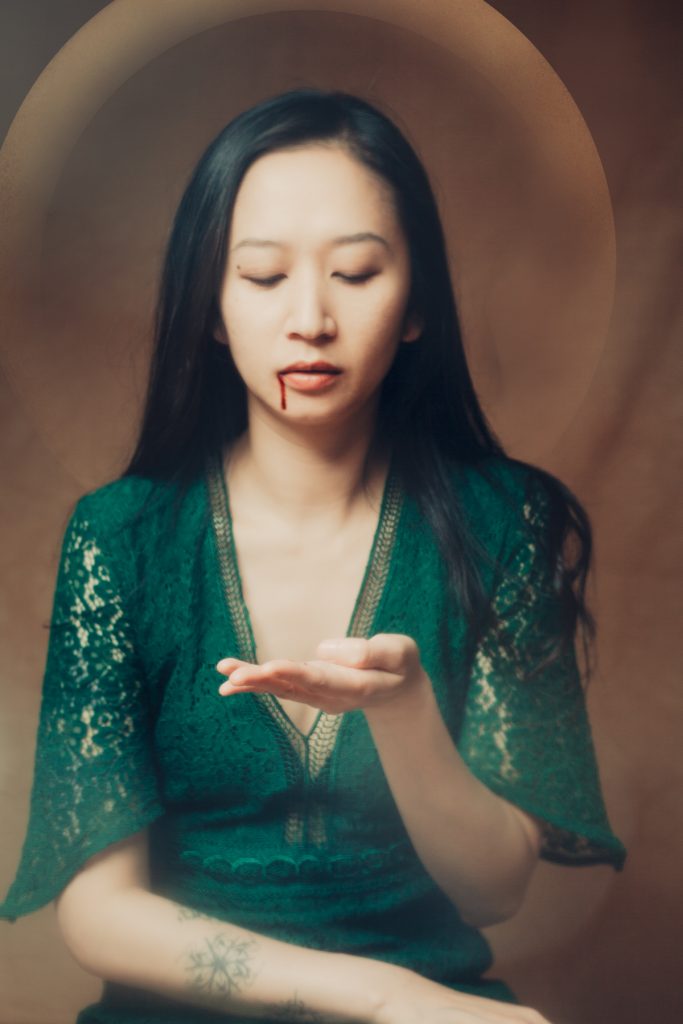
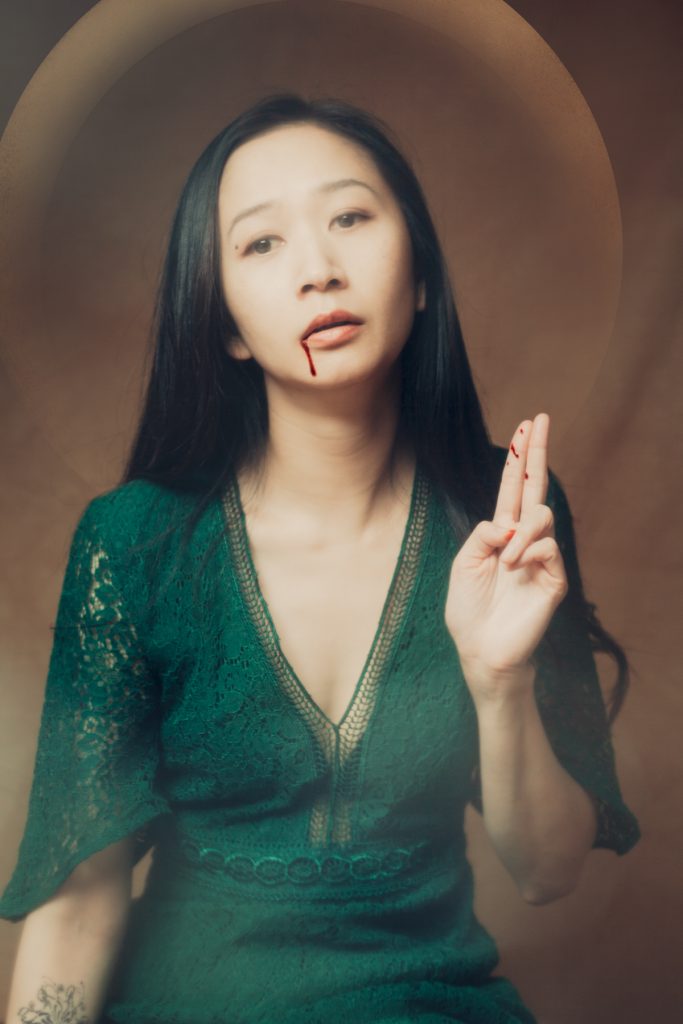
Kayee’s art often carries elements of satire, rebellion, and challenge, particularly toward religion. Yet, her intent isn’t disdain; she sees faith as a personal choice. In her works, she takes a unique approach, portraying Jesus as a woman. Her reasoning is twofold. First, her self-portraiture primarily embodies her female identity. Second, she questions why Jesus, who likely lived in the Mediterranean, is traditionally depicted as a fair-skinned white man. The gender question regarding Jesus remains unanswered, but Kayee’s focus is not on this, but rather on understanding women’s historical struggles and power if Jesus were female.
Half of Listening

From a very young age, Kayee has been living with partial deafness. However, because she was so young when she first encountered this condition, she adapted to it as her norm and couldn’t comprehend what she might be missing. In her world of sound, everything seemed compressed onto a single plane. There was a lack of depth, making it challenging to discern the source or direction of sounds. In crowded social settings, she found it particularly difficult to keep up with conversations.
Then, in 2018, an intriguing idea struck her. After a day at work, she felt an impulse to recreate “The Last Supper”, Leonardo da Vinci’s famous masterpiece. This impulse led to the creation of her first digitally composed artwork, “Who Is Listening?” In this interpretation of The Last Supper, she played the roles of all twelve disciples and Jesus himself. However, an intriguing twist permeates this reimagining. The disciples, despite sharing a table with Jesus, struggle to communicate. This bizarre scenario emerged from Kayee’s personal experiences and observations.
In her view, discussions often lead to people interrupting each other. This constant disruption hinders genuine communication. The artwork poses a fundamental question: Who is listening in these interactions? It’s a reflection on the challenges she has encountered in communication and her understanding of the world.
Half of Herself
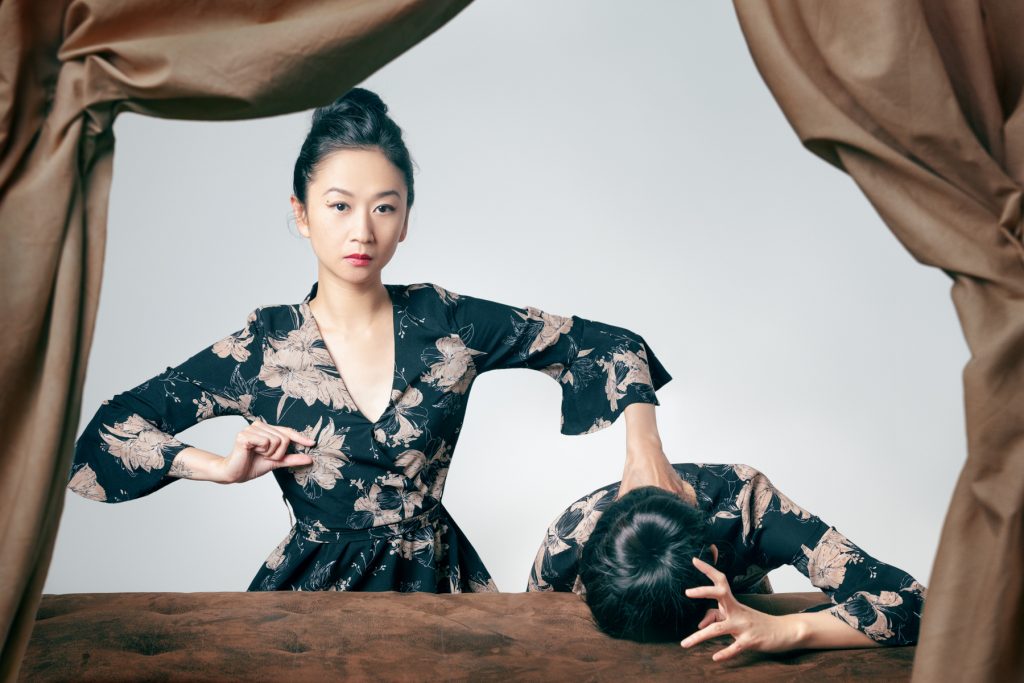
In her earlier work, Kayee often paired herself with an imaginary sister, a brother she couldn’t have. “Sisters” delves into the intricate relationship between family members who, despite their differences, share an unbreakable bond. This project emerges from her childhood, where she sensed an unexplained void. Her understanding only came when, at ten, she learned about her unique birth circumstances: she initially had two siblings, but one absorbed more nutrients in the womb, resulting in the other’s weakness and eventual loss. This incident left her with a profound sense of survivor’s guilt.
Years later, during a hypnotherapy session, she revisited her birth and realised that the other sibling was merely a physical incompleteness for which she bore no guilt. This therapeutic experience marked the end of the “Sisters” series, a cathartic chapter in her life.
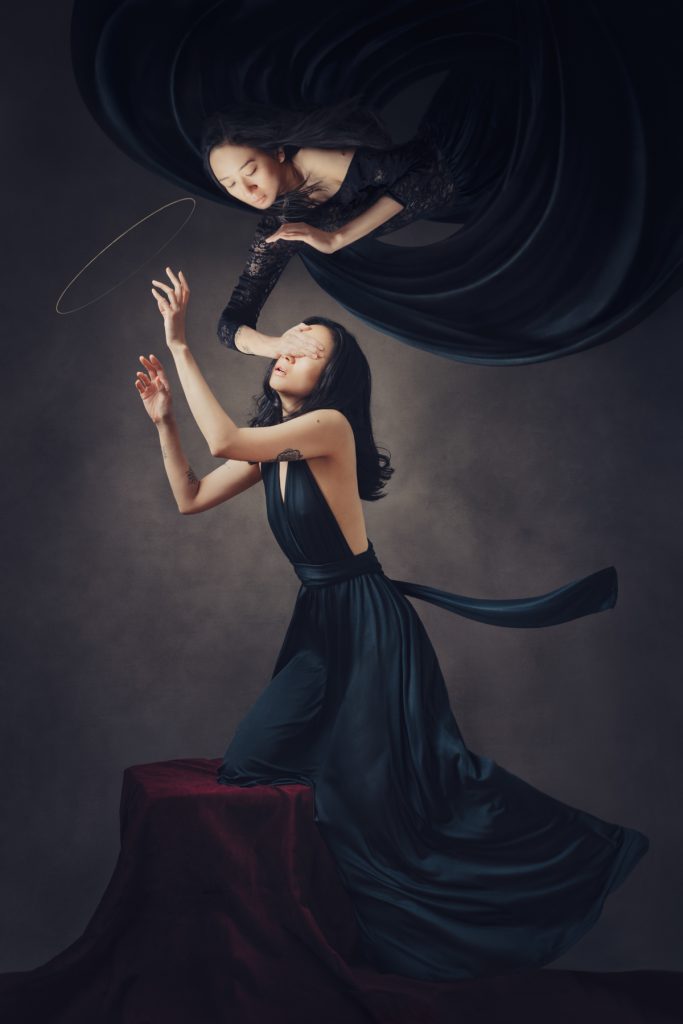
Years later, during a hypnotherapy session, she revisited her birth and realised that the other sibling was merely a physical incompleteness for which she bore no guilt. This therapeutic experience marked the end of the “Sisters” series, a cathartic chapter in her life.
Women gaze

Two years ago, Kayee participated in the “Women Gaze” photography exhibition. This display of her art explores how women view themselves and the world, in contrast to the mainstream “male gaze”, prevalent in commercial media. For Kayee, the “women gaze” isn’t necessarily an antithesis to the “male gaze”. It represents a diverse perspective, shaped by various women, regardless of their sexual orientation. As a cisgender woman, she has discovered her unique mode of expressing personal experiences.
In essence, these words can only provide a glimpse of Kayee’s photography. If you are intrigued by the work of this internationally renowned self-portrait artist, it’s best experienced in person.
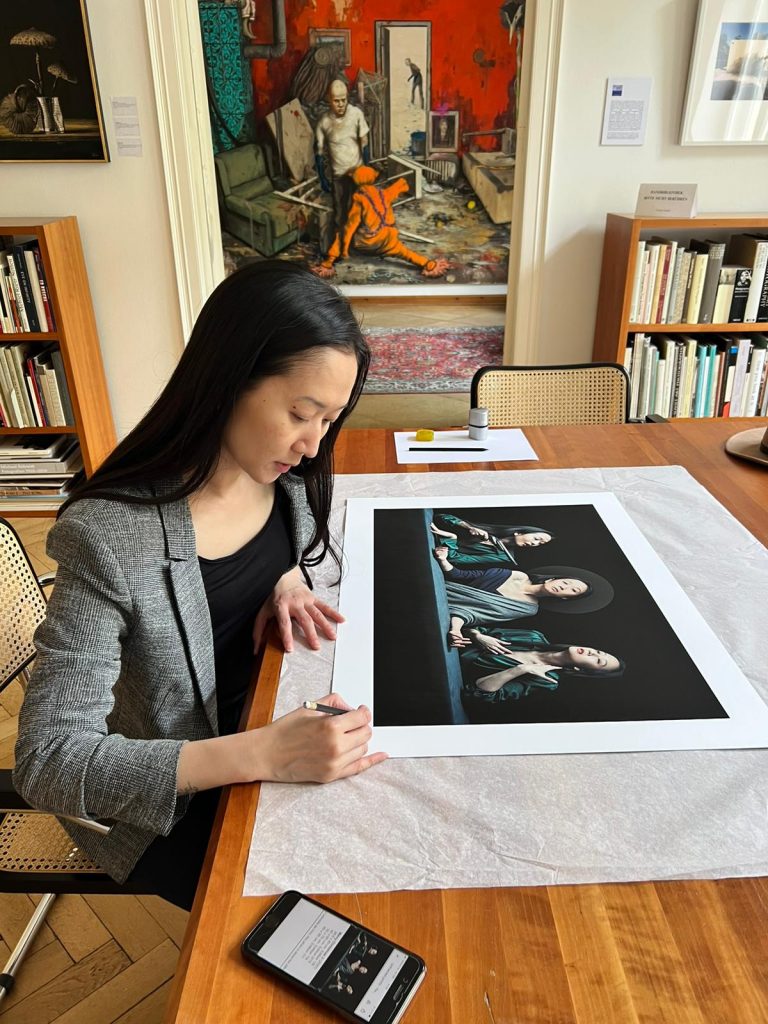
Kayee C Photographer website: https://ckayee.com/
Photo source: Kayee C., The New Yorker

